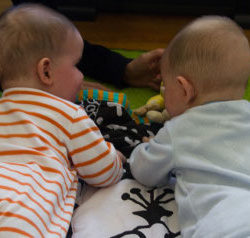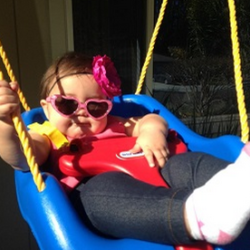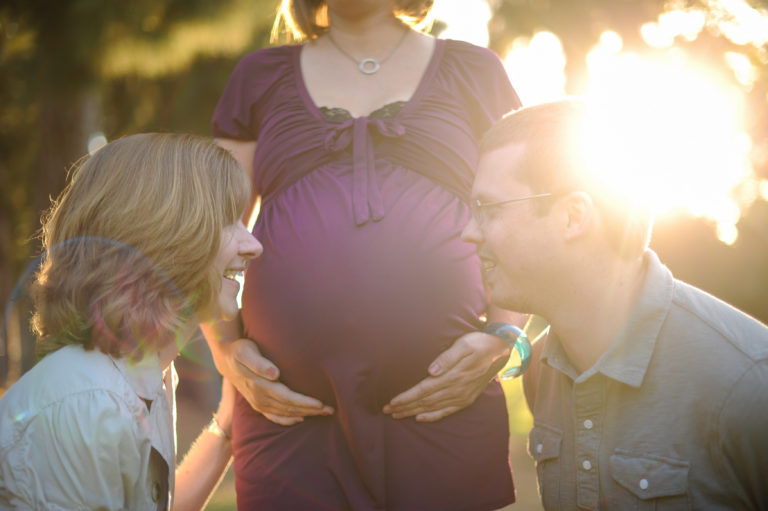You’re Not Alone: An In-Progress Story of IVF, Donor Sperm & Never Losing Hope
A patient shares infertility realities, advice, resilience and a message of hope in her ongoing journey through donor sperm IVF
Written by an RSC of the San Francisco Bay Area patient who has chosen to remain anonymous
We first started our in vitro fertilization (IVF) journey in May/June of 2020. I had just turned 36, my husband 40. We had been trying for a baby since January of 2020, but I think we knew in the back of our minds that we’d be doing IVF for a couple reasons – age and I happen to also be a balanced translocation (BT) carrier of Down syndrome.
I discovered this when I was a baby. My parents had me tested via chorionic villus sampling and amniocentesis while still in the womb because my first cousin has severe Down syndrome. For anyone unfamiliar with BT of Down syndrome, it basically means I have the correct number chromosomes but they’re in a different location. This “rearrangement” could disrupt normal cell division and increase my chance of having a baby with Down syndrome by 25% (this number is age specific). And for those wondering, BT carriers of Down syndrome exhibit zero features or characteristics of the syndrome.
Fertility testing reveals roadblocks
We had our initial consult (using Zoom of course, thanks to COVID-19) with Dr. Mary Hinckley. Let me tell you, I LOVE this woman. She’s the perfect combination between your mom, best friend, favorite aunt and quality doctor. She’s gentle, informative, supportive and always in your corner. For any woman going through infertility, the more support we have, the better. I’m sure all of the other physicians at RSC are amazing, but she has a special place in my heart.
We started all the baseline fertility testing and I found out that my ovarian reserve could have been better, but could have been worse, too. My anti Müllerian hormone (AMH) came in around 1.17 ng/mL and my follicle-stimulating hormone (FSH) was 9.81 mIU/mL. Again, not awful, but I wasn’t getting any younger, so it was in the back of my mind a tiny bit.
My husband’s sperm health was checked and the first time it wasn’t done properly, the second time it looked “wrong” and finally by the third test it was discovered there could be a problem with his sperm. We were then referred to a urologist.
After many months of back-and-forth tests with that doctor, it was apparent we had a real problem. There were issues with count, motility and overall quality. This was shocking and I was immediately concerned. They needed to perform a TESA, or testicular sperm aspiration, which consists of going under the knife to get the sperm directly from the testicle. We thought this would definitely get us some good sperm as sometimes there are “plumbing” issues. In order to get cleared for surgery they asked him to get an echocardiogram to ensure there wouldn’t be any cardiovascular complications while under anesthesia.
An echocardiogram adds to our fears
While getting the echocardiogram, they discovered that my husband’s heart actually wasn’t ok. In fact, there was a serious issue. He has an aortic aneurism and severely leaky valve.
I’M SORRY – WHAT? Are we talking about the same healthy, almost 41-year-old man, here? There is no way.
It took a lot to come to terms with thinking he could just fall over any second and be one of those awful “head scratcher” stories you hear about. Nonetheless, for the sake of infertility, I will leave that part of the story where it is and move on. Long story short, we were approved for the TESA surgery and he has a great team of cardiologists who are closely monitoring his heart. Surgery will be eminent in the future.
Test results and more heartbreak
TESA results were immediate. Our urologist called to tell us that my husband has a condition called azoospermia. For those non-Googlers out there, azoospermia means “zero sperm count.” The type he has isn’t treatable and if we wanted children, we would either have to adopt or use donor sperm.
This was literally our worst nightmare. I can honestly say I never IN A MILLION YEARS thought I would have to consider a sperm donor. This is the kind of thing you only hear about; this couldn’t happen to US! It only happens to 1% of men.
We were HEARTBROKEN. As a heterosexual couple, this is literally the last word you want to hear. After all, isn’t science (and lots of money) supposed to make anything happen? So, in October of 2020, we found out my husband has a life-threatening condition and we can’t have our own children. We also were dealing with some extended family issues that were rough as well. Jesus, take the wheel.
Choosing donor sperm IVF
My husband and I discussed our options and, while we agreed that we could adopt later on, we wanted to still pursue our desires to have children through IVF. I started stims (or hormone stimulation shots, which I personally didn’t find painful at all), had some good follicles developing and was finally cleared to have my retrieval.
I will say that another thing I didn’t see coming was the potential of cancelling the cycle. There are many things that have to align in order to get the green light. They can and will cancel the retrieval if something is off. I don’t say this to scare anyone, I just wish someone had told me these things so I could have managed my own expectations better. We were able to get 14 eggs.
Finding the right donor sperm
We also had to find a sperm donor. This was interesting. I cried most of the time while filing through the random people wondering why WE had to be the people doing this. It made me appreciate the beautiful features of my husband knowing we would never be able to pass them down. I had to find a lot of acceptance around this process. After all, it was the only way we’d be able to proceed.
None of my friends envied me. Even my same-sex friends used donors they knew beforehand and had great rapport with. Nonetheless, we found someone. It was additionally challenging because we needed to find extended genetic testing for any donor we were considering so any and all potential candidates were off the table if they didn’t have the necessary testing. Again, such a strange reality but there is a certain level of acceptance that comes along with this process. First acceptance and now appreciation and gratitude for science and the fact we even get this chance.
A sweet little embryo
Of my 14 eggs, eight fertilized and four became blastocysts (embryos). Another part of the process that I wish someone really (LIKE REALLY) made me understand is how many eggs or embryos you actually start with and how many you could potentially end up with. At each phase of this process, you can expect about 50% less than what you started with. So, of our 14 eggs, only four made it to genetic testing.
In the end, we ended up with a little girl embryo. A sweet little baby girl. We named her immediately. Getting to this stage of the process felt like such a battle, but we made it and so did she.
Embryo transfer – a moment worth waiting (and waiting) for
Then it was transfer time. Well, at least I thought so. This is another area of the process that I wish someone helped me understand a little more – again, to manage my own expectations.
With all these “I wish someone told me,” you’re probably thinking, why didn’t my doctors or case managers tell me? Well, they likely can’t or maybe shouldn’t. A lot of the information is overwhelming and sharing certain information that could only potentially happen could just muddy the water for most. I just happen to be the kind of person who hates getting my hopes up. I want all possibilities in front of me, and then it’s up to me to manage my own expectations.
I started with a certain type of estrogen and ovulated through it which shouldn’t happen. This led to a cancelled transfer and I had to wait a month. Next, they increased my dose. The lining was still too thin and the transfer was cancelled again… and we had to wait another month. Finally, we switched to the estrogen shot which seemed to work.
I requested to switch to the shots because I just didn’t feel great about the oral pills. The progesterone shots are a little scary in the beginning, but try ice first and follow with heat after, along with a lot of massaging. I had about 5-6 different transfer dates and finally I got to a decent thickness (7.2mm), so it was game time. The transfer doesn’t hurt much at all. And even if it did I don’t think many would mind because this is the moment you’ve been waiting for!
The longest short wait in fertility
I can honestly say I underestimated the 2WW (2 week wait). It’s awful. Finally, I went in for my blood draw and got the call later on. I was pregnant! I was finally pregnant.
I was ecstatic and so over the moon. However, this amazing news came with a catch. I was never told about human chorionic gonadotropin (hCG) levels. I know about them and know it’s the pregnancy hormone, but I didn’t know that it has to be a certain level at different phases of the pregnancy. The doctor sharing the amazing news told me that my levels are a little low (42) and they want me to come back in two days. The hCG should double almost every day.
My levels were only at a 45, then only 48. After five weeks, my pregnancy was declared a chemical pregnancy meaning I will “miscarry” in my next period.
Finding hope in the “Infertility Club”
I write that last part in present tense because this awful news to “stop meds” and allow the baby to pass came to me just yesterday. I just keep saying “if she wasn’t meant to be, then why’d she stick to begin with?”
The reason I share my story today is to shed some natural light on the real possibilities of IVF and maybe find some hope and healing for myself as well.
Not all hope is lost. Some days don’t seem so promising, but the best part is that most of those feelings do pass and the light at the end of the tunnel vaguely peeps through. I have found some true resilience in the members of this infamous club of infertility and while the hope of having a family in the near future ebbs and flows throughout day, somehow, it’s never lost.
There is always a member of this club who will lend an ear and share a “you’re not alone” story. I hope someone somewhere can gain something from this and know that they’re not alone.
Coming this summer: IVF round two
Warm thoughts and many prayers,






